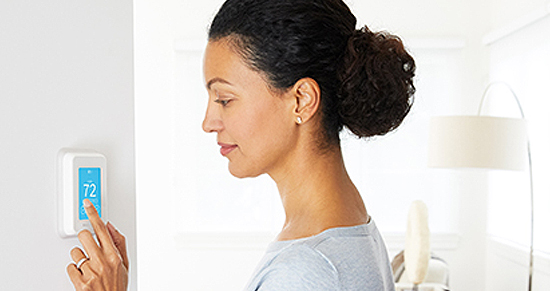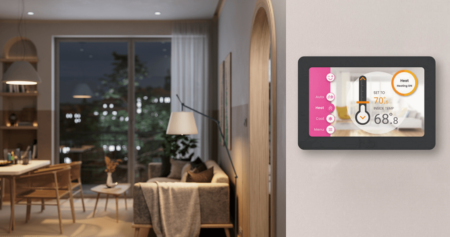As the world continues to become ever more technology-driven with every passing day, one of the first blossoming trends of the still-young digital age has been the gravitation towards sustainability and climate action at all levels around the world. Consumers, enterprises, and even governments globally have been starting programs and setting eco-friendly benchmarks to strive for and hopefully achieve by the near future as sustainability begins to drive decision-making from consumers to investors in nearly every sector.
Among the sustainability efforts, an increasingly popular one has been to improve overall energy efficiency at both consumer and organizational levels. This is mainly due to the expected exponential increase in worldwide energy demand as technology use continues to rise and the current gap in energy equity that plagues many parts of the world. For instance, in the U.S. alone, more than 30 million households are considered energy insecure, which can have profound implications on health and health equity.
This has sparked a desire among enterprises and consumers to quantify their current overall energy efficiency, which can be done with the Building Energy Rating (BER) scale. The scale was created and is mainly used in Ireland, though similar energy rating scales have begun to be leveraged in other countries. However, as for the BER scale, ratings can go from A, the highest, to G, the lowest, and it is a good indicator of how much a building will spend on energy and how much carbon it will need to produce to heat the building to a comfortable level adequately.
“The BER scale is already used extensively in Ireland, with a recent study done by the Environmental Systems Research Institute (ESRI) leveraging the BER scale to determine household energy efficiency across Ireland,” said Oliver Hynes, Founder and CEO Hub Controls and inventor of the Hub Controller, a smart thermostat that is both affordable and highly automated. “The ESRI calculated a household’s overall energy efficiency with the BER scale via two main statistics: energy use in home heating and home heat retention.”
The ESRI analysis was based on detailed information collected every three minutes over a span of two years, obtained from smart thermostats provided by Hub Controls Ltd, a tech start-up in the home automation/energy management sector. The data acquired from the Hub Control smart thermostats included household thermostat set point, indoor temperature, and heating unit operating status, giving the ESRI extensive information when calculating a household’s energy efficiency.
“Using the BER scale, the study found a direct correlation, that improved overall energy efficiency directly contributes to less energy use when heating a home and better heat retention, especially during the winter months,” Hynes explained. “The improved energy efficiency also offered benefits apart from heat use and loss. Households with a higher energy efficiency rating also saw monetary advantages, thanks to their overall less energy use.”
The ESRI used data generated via smart thermostats to calculate their results, in which the technology can be used for data generation and energy efficiency. Smart thermostats are just one type of innovative device that falls under the category of home automation tech. This refers to a network of hardware, communication, and electronic interfaces that integrate everyday devices via the Internet, being able to be managed from a smartphone or tablet anywhere and anytime.
“Home automation tech is becoming rapidly more available at a consumer level, meaning more households can start to reap the energy-related benefits of the technology,” Hynes said. Hub Controls has expanded into the U.S. market, given the soaring demand for affordable smart thermostat – and networked thermostat – solutions for energy providers as well as consumers.
“For example, with AI-enabled thermostats, consumers can set temperature schedules and routines more efficiently. AI-driven home automated systems allow consumers to set different temperatures for different times of the day, enabling them to avoid unnecessary heating or cooling while they’re away. By optimizing temperature settings based on routines, consumers can both reduce energy waste and save money.”
Furthermore, home automation systems with AI–equipped thermostats leverage technology and data analytics that can adapt to a consumer’s lifestyle, preferences, and even weather conditions where they reside, ensuring their home remains comfortable while saving energy. This helps ensure optimal energy use through all four, which is essential in winter, as heat retention can play a role in fighting seasonal depression.
With consumers around the world beginning to prioritize their energy use for the sake of sustainability, home automation tech is blossoming quite rapidly. The global home automation market came in at USD 64.66 billion at the of 2022, with experts predicting a CAGR of 12.3 percent, estimating a market value of USD 163.24 billion by 2028. Furthermore, the market revenue for the technology itself reached USD 45.6 billion in 2022, with an estimated CAGR of 10.6 percent, to bring the market revenue to a projected USD 136.5 billion by 2033.
“Overall, those who read the ESRI’s recent energy efficiency study should take away that leveraging the BER scale can help them rate their energy efficiency, as knowing where to improve is the best way to start,” Hynes said. “Even if a system for the whole house seems too complex, something as simple as a smart thermostat like the ESRI used can go a long way when it comes to improving household energy efficiency for all consumers and deliver competitive advantages for the energy providers who can now make a real difference in energy accessibility and conservation.”
Read the full article here








